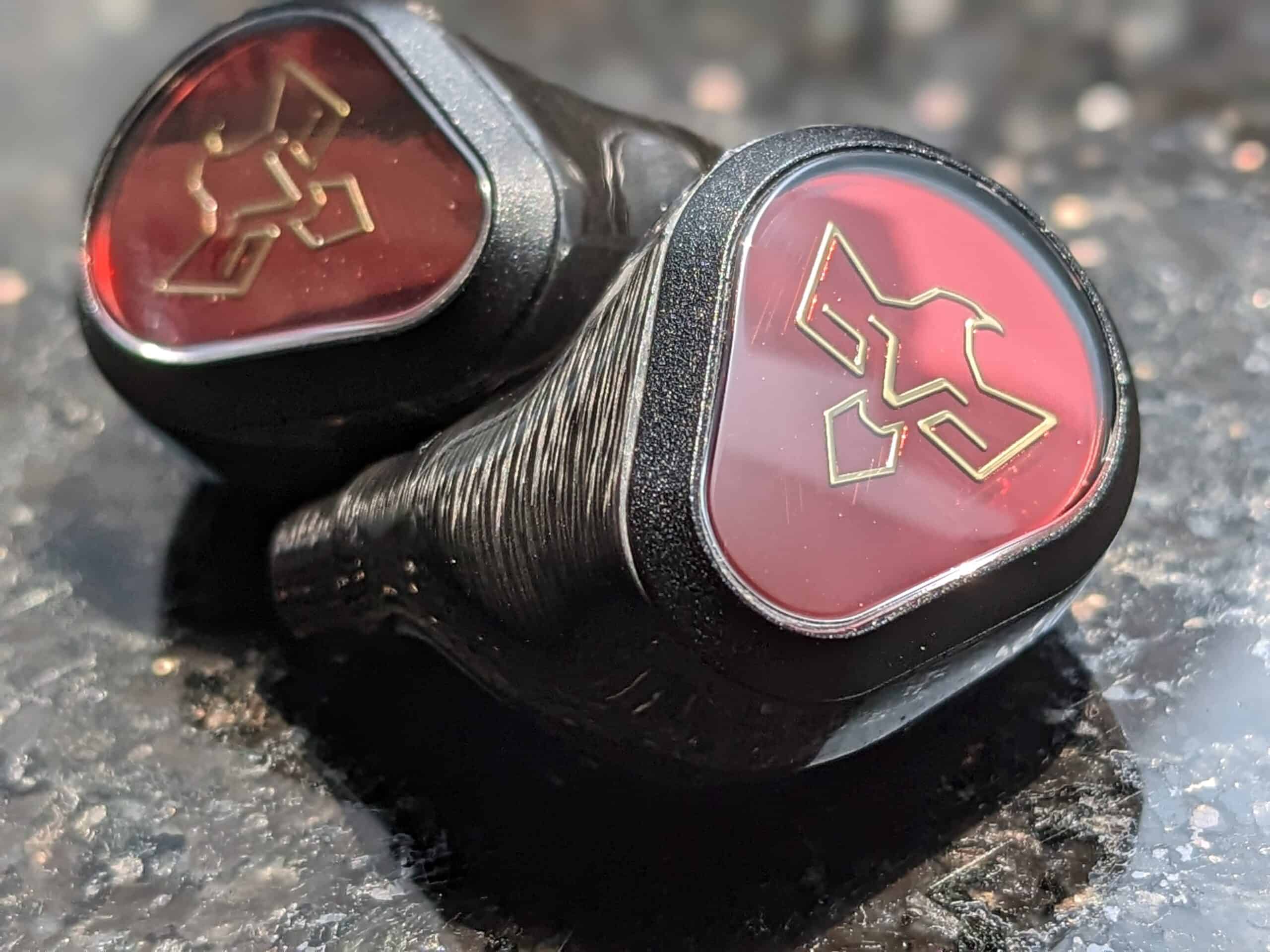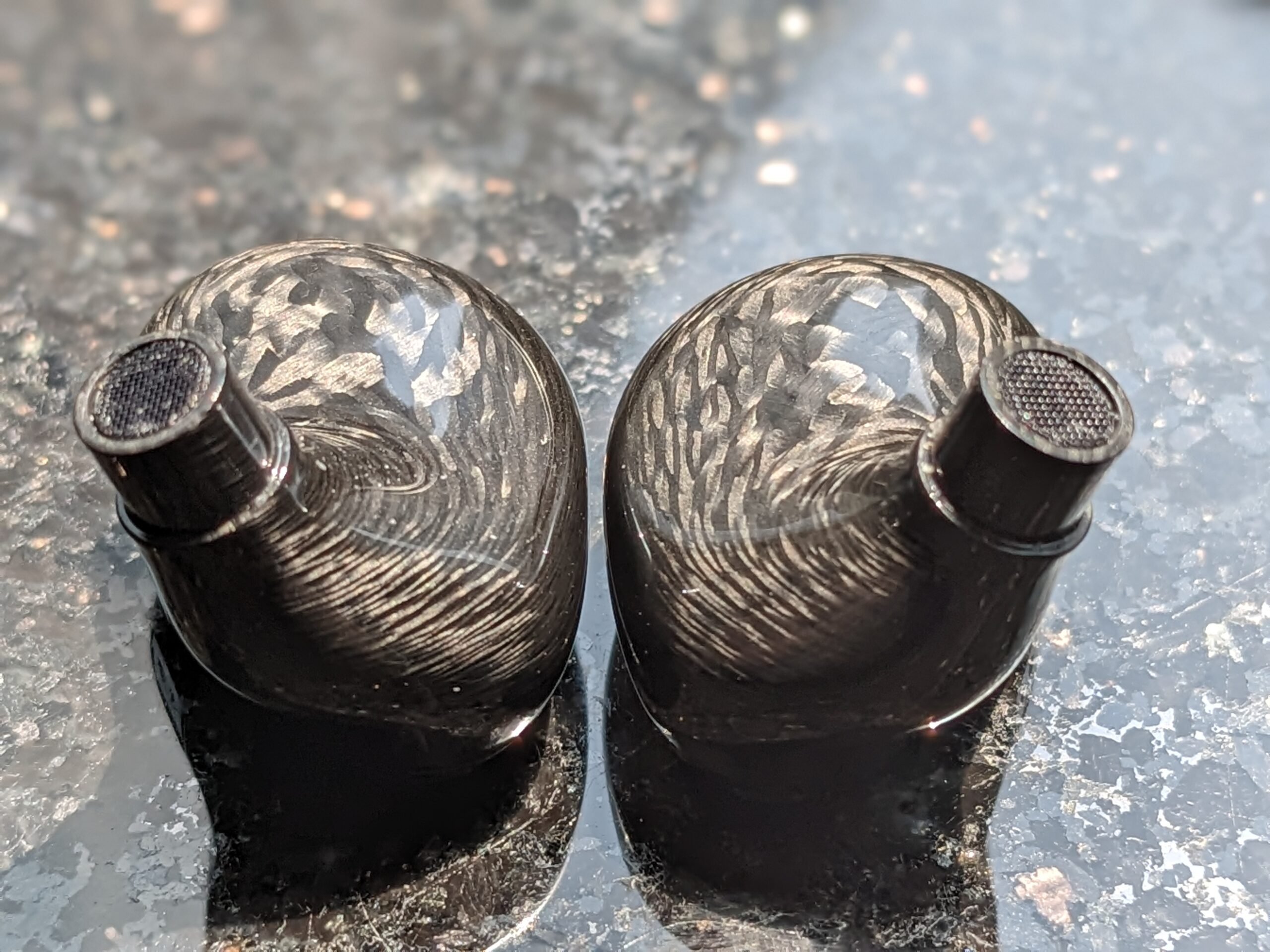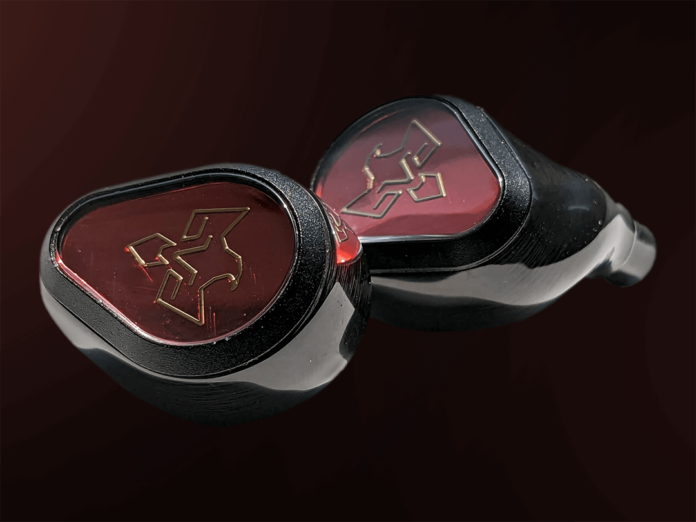Vision Ears Phönix
I finally got my hands on a unicorn of IEMs: the Vision Ears Phönix. The Phönix may be one of the most hyped ultra high-end IEMs to have come out in recency, and has even seen a limited edition re-release since initially hitting the market. The unit I’m reviewing today is the original version, which sees a cool and easy $3,900 price tag. As this unit of the Phönix has been loaned by a reader for this review, I won’t have pictures of the accessories that come with the in-ear monitor. But as usual, I’ll be going over the Phönix’s build, fit, technical design, and most importantly, what it sounds like.
What’s In the Box?

- Storage/display box
- Vision Ears Phönix in-ear monitors
- 1.2 meter braided cable (2 pin XLR to 4.4mm balanced)
- Spinfit Eartips
- AZLA Eartips
- Firm Leather Carrying Case
Fit and Physical Design
The Vision Ears Phönix is by and large flat on both faceplate and chamber side of the IEM, and features a fairly long acoustic nozzle structure. This led to a deeper fit in my ear canals; not as deep as some IEMs in this tier (like Noble Audio’s Ronin for example), but nonetheless, a significant degree deeper than average. Once fully inserted, it rested flush against my concha. Overall, this is a very firm and gripping fit that I found to offer a high degree of comfort, eliminating a need or temptation to fidget with the IEMs in my ears. As a teaser for the sound portion of this review, I was also very satisfied with the tactile rumbles and vibrations that were constantly flowing through the shells.
The Phönix’s housing is primarily composed of aerospace-grade carbon fiber, while the faceplate is made of a machined annodized aluminum and encased in sapphire glass. The style here isn’t over the top, but perhaps subtly regal with the gold, black, and red color scheme. There are beautiful marble-like swirls on the chamber-side of the IEM, apparently in a unique “fingerprint” for each unit of the Phönix made.

Overall, I’m a fan of the Phönix’s modestly classy style, and in love with the firm, hassle-free fit.
Technical Design and Specs
The Vision Ears Phönix features a 5 way passive crossover with 13 drivers: 4 balanced armatures for lows, mid, and highs alike, and an additional super-teeter balanced armature for the highest of frequencies. The included 4 wire 23 AWG silver-gold alloy and OCC-copper litz cable is a new design from Vision Ears, and was custom made specifically for the Phönix.
Vision Ears designed the Phönix as a revised and refined version of the ERLKöNIG, a previous high end release from the company that also proved itself to be one of the more popular high end IEMs for its time. Improvements primarily came in the form of lighter shells and a more revealing high-frequency tuning

Soundstage
The Phönix has a highly engaging and energetic stage. The size is considerable, and I found its depth to be its most impressive dimension. Panned parts had a strong tendency to pass left-to-right as if they were several feet in front of my face. The left and right channels are strikingly well connected, allowing for awesomely fluid movements all through out my listens.
But what may have impressed me more than the size of the stage was the precise and vivid imaging and spatial placements Vision Ear’s Phönix was capable of executing. While most of the stage had a wide but forward facing nature, parts of tracks took on three dimensional, angular qualities that cut across the width, depth, and height of the stereo image. This provided a very convincing holographic character that made for elegant, spacious, and wondrous listens.
Lows
The Vision Ears Phönix is a pretty balanced sounding IEM overall, but has a decisive warmth that stems from it bass and mid range balances. Subs have an easy and audible presence, rumbling through the shells and bringing a satisfying excitement to electronic tracks. However, more stock is placed on an air-tight mid bass and high bass, which gives the Phönix more slam and thump than rumble. Sound signatures with ample high-bass usually aren’t my style as I find they can injure low end and mid range separation, but the Phönix exhibits a control over its high bass that is nothing short of impeccable. Kick drums find extra oomph and body, while acoustic guitars find a highly articulate and colorful heft in their fundamentals. While this isn’t a low end that’s going to knock your head off, its colorful and artful, laying a firm and cozy foundation from which the rest of the tuning flowers.
Mids
Low mids find a distinct emphasis here as high bass amplitudes are still cooling off as we enter the mid range. Again, I’m usually not a big high bass fan, and when I hear tunings heavy in high bass and low mids alike, I’m usually not very enthused. But once again, the Phönix completely wins my respect and awe here as its masterfully controls its dense warmth without any veiling or muddy resonance. High mids find a gentle ramp in their amplitude, balancing the low mid density but leaving it as the dominant quality. Midrange vibrations course through the shells nearly as much as the lower frequencies, bringing a smooth, tactile excitement to vocals, drums, and rhythm guitars.
Highs
There’s a welcome peculiarity to the Phönix treble profile: it’s somewhat cautious in its amplitude, while simultaneously being highly resolving and detailed down to the most granular tips of the highest frequencies. There’s a quality here that goes beyond tuning that’s hard to put my finger on. Despite the lower treble amplitudes giving distorted guitar harmonics and cymbals a smoothed over character, the Phönix was constantly unfolding details in recordings: a chair moving in the background, high-frequency phaser effects on certain synth parts – easter eggs that I haven’t heard before, even on IEMs with much bolder and louder treble profiles. For me, this is where a ce rtain “magical” quality of the Phönix takes effect, providing a ton of presence to its uppermost frequencies sans painful or peaky treble spikes. I really can’t figure out what’s going on here, but can hear for myself how much appeal this part of the Phönix’s tuning can hold for treble heads and the treble sensitive alike.
Overall

The Vision Ear’s Phönix sits at an elusive crossroad of being both incredibly smooth and detailed. While the signature can be generalized as balanced, this isn’t to say that it’s neutral. Rather, it’s warm and rich, and bristling with colorful details. The vast stage and vivid imaging deliver a sense of grandiosity and wonder that further enhances the Phönix’s articulate clarity. So is the hype, and more importantly the price, really worth it? As much as I would like to be able to afford the Phönix for myself…I have to admit, the answer to both of those questions is yes. Vision Ears Phönix is nothing short of a modern classic, and asserts itself as an era-defining IEM that sets a new standard in the high-end market.
You can purchase the Vision Ears Phönix here from Audio46.

Compare the ranking of various headphones, earbuds and in-ear monitors using our tools.
Discuss this, and much more, over on our forum.
---MAJORHIFI may receive commissions from retail offers.














